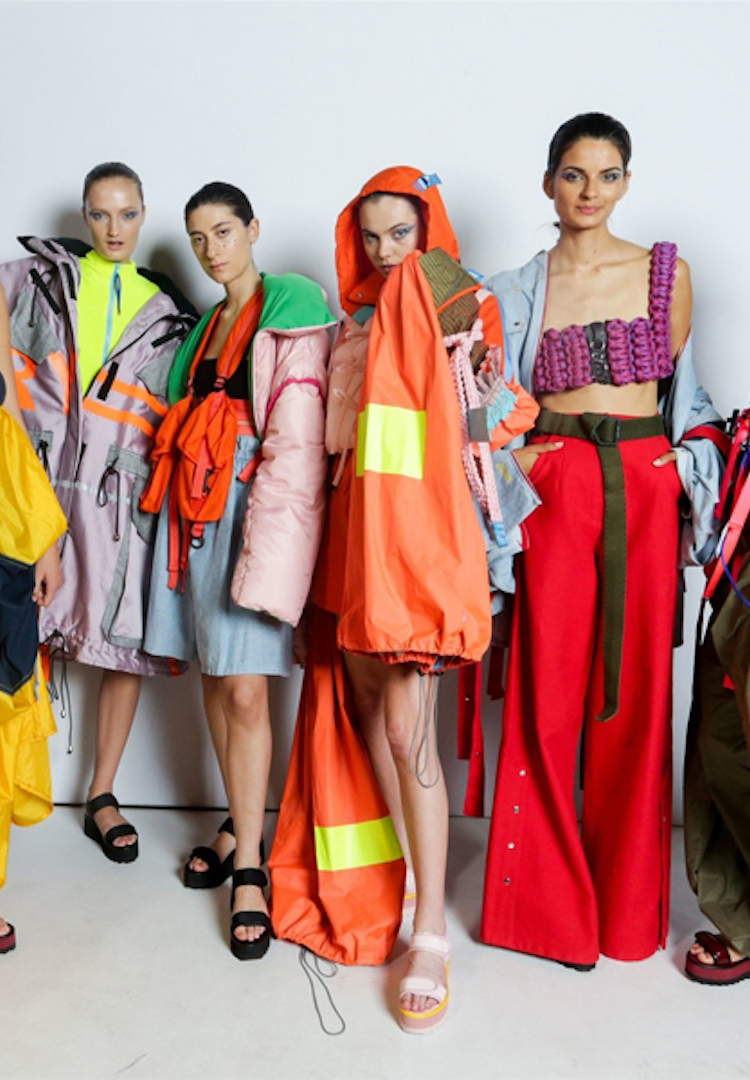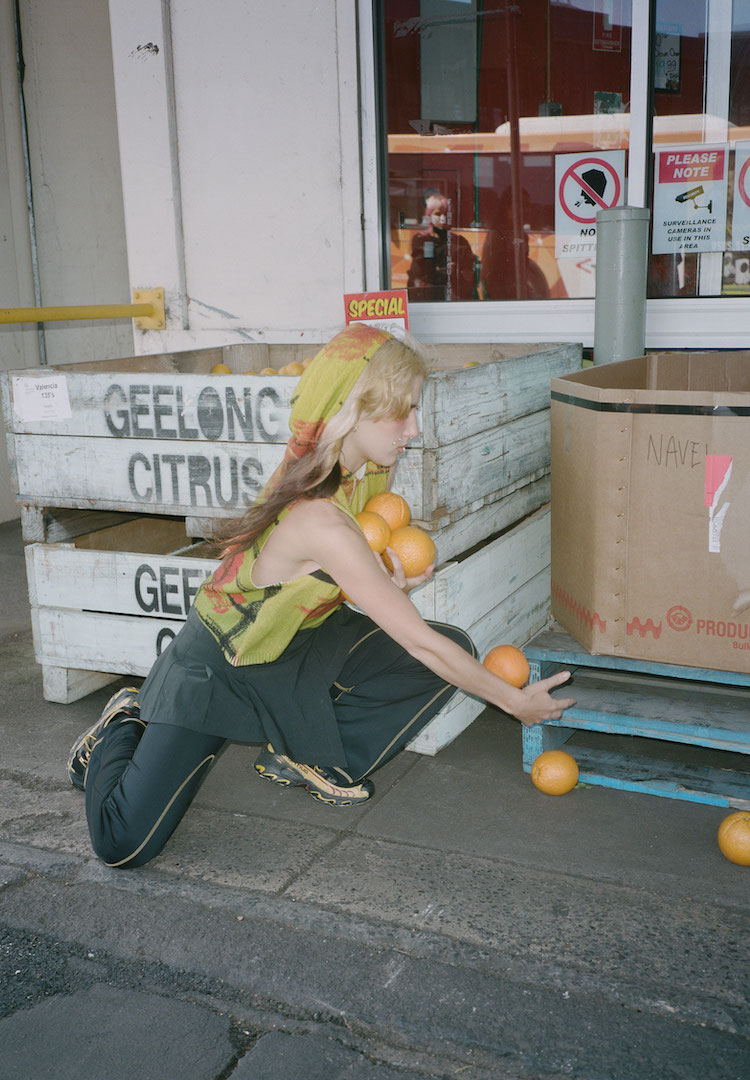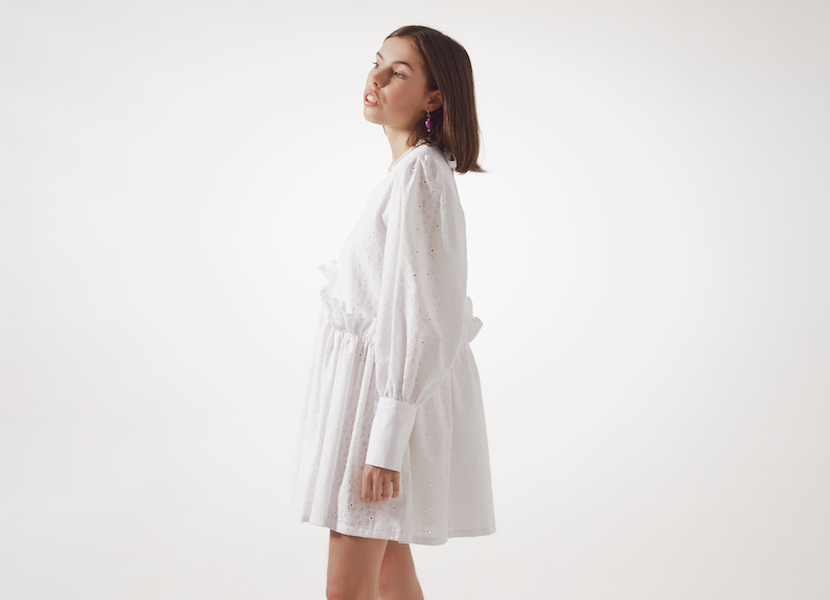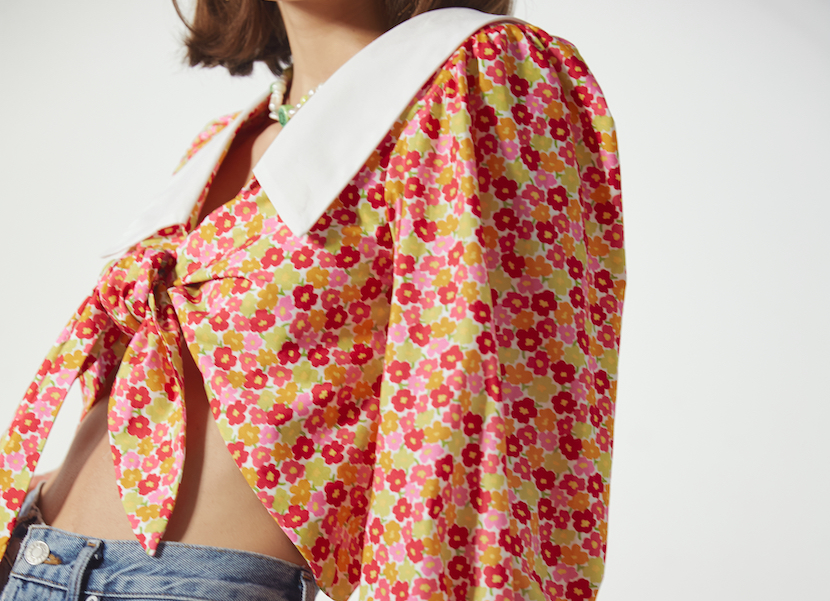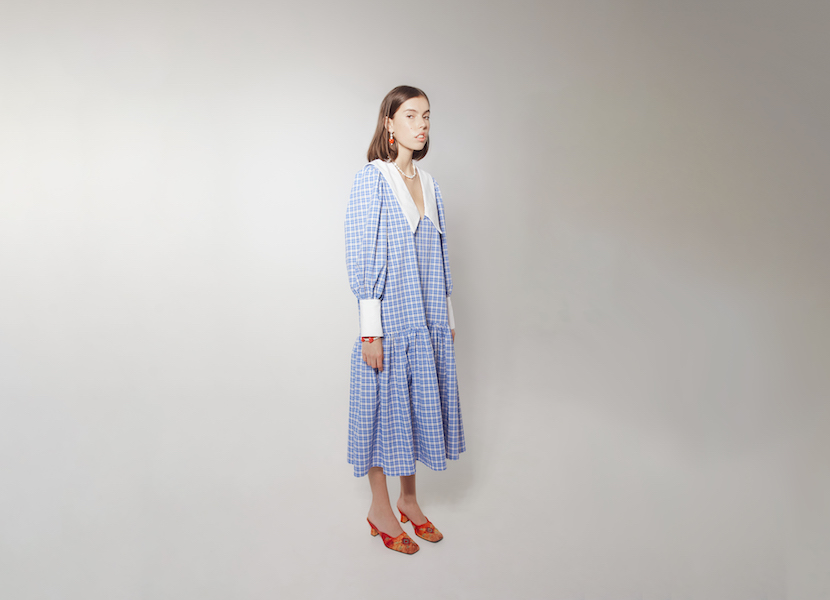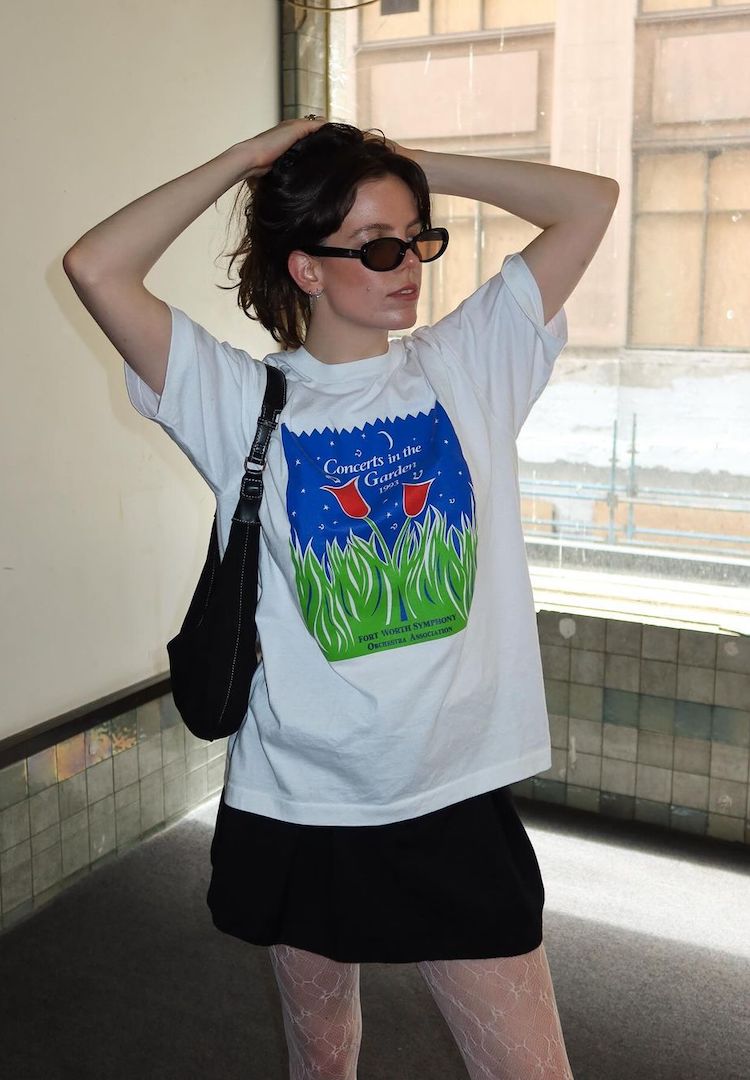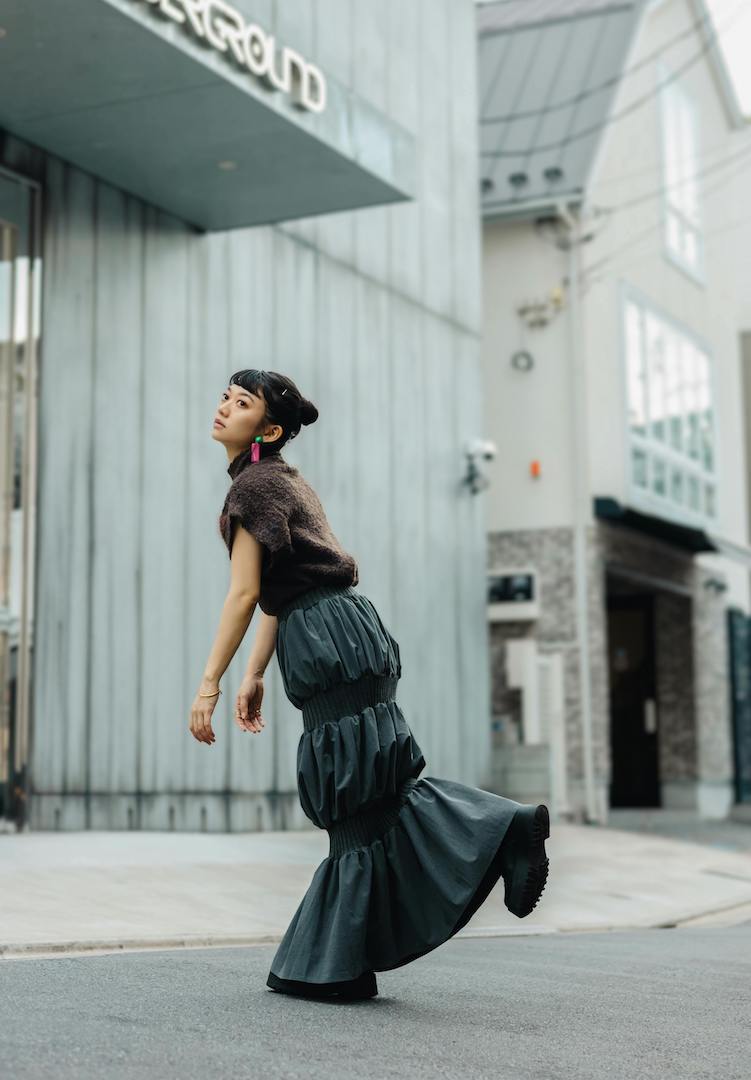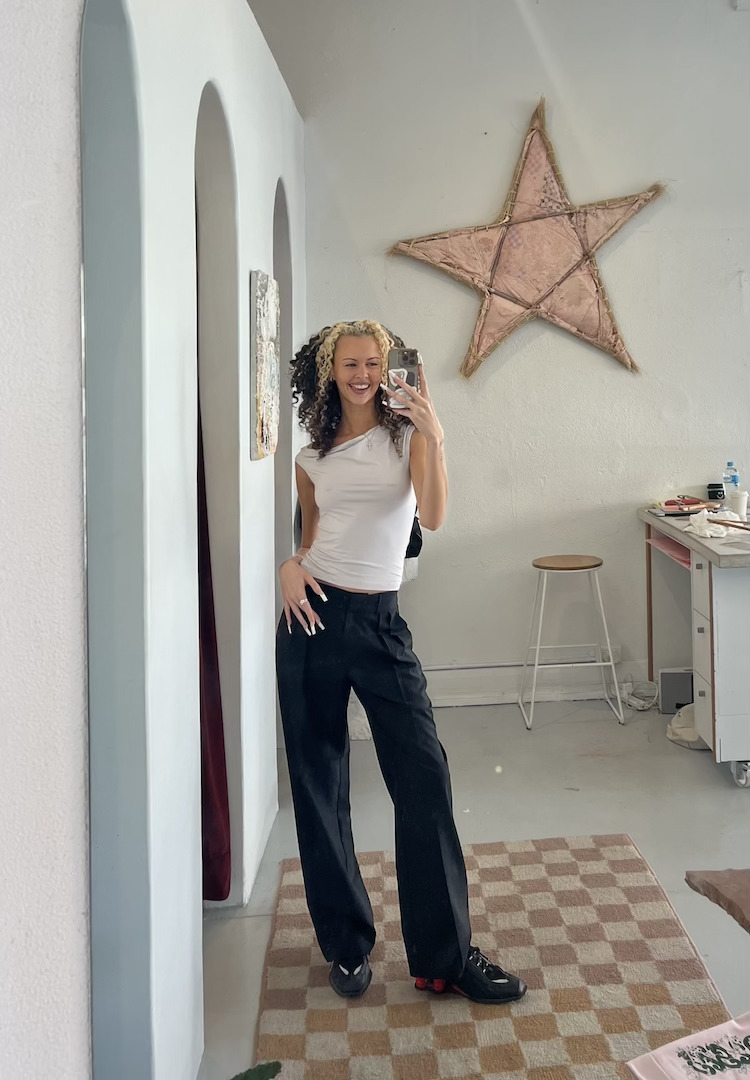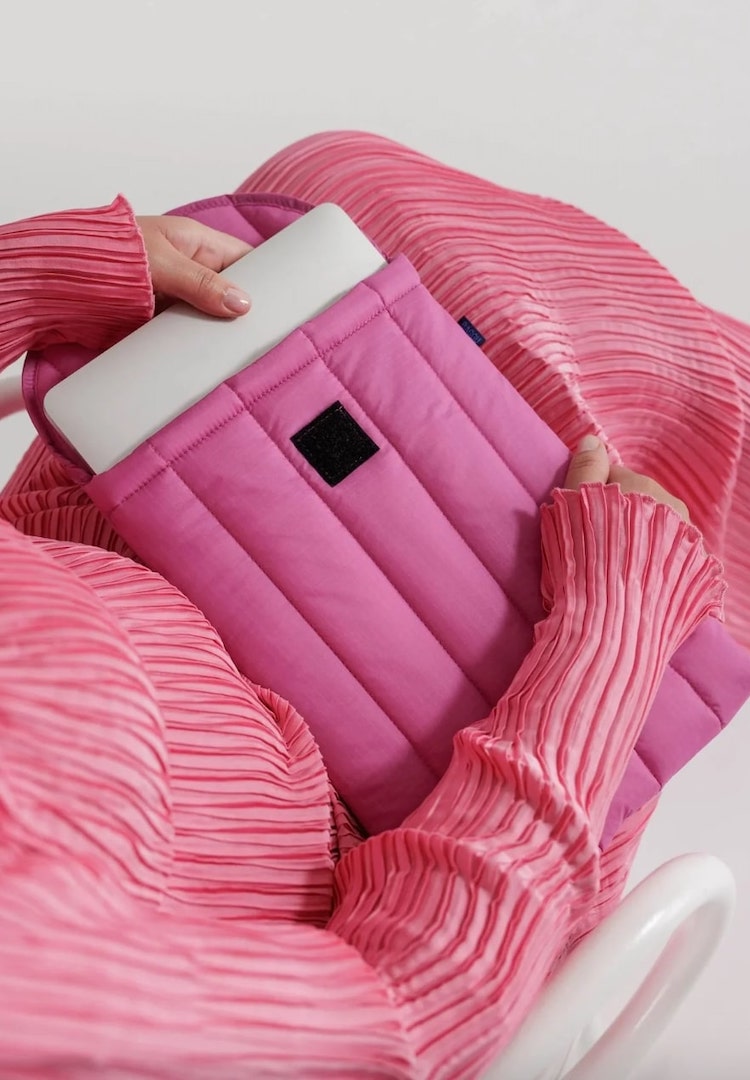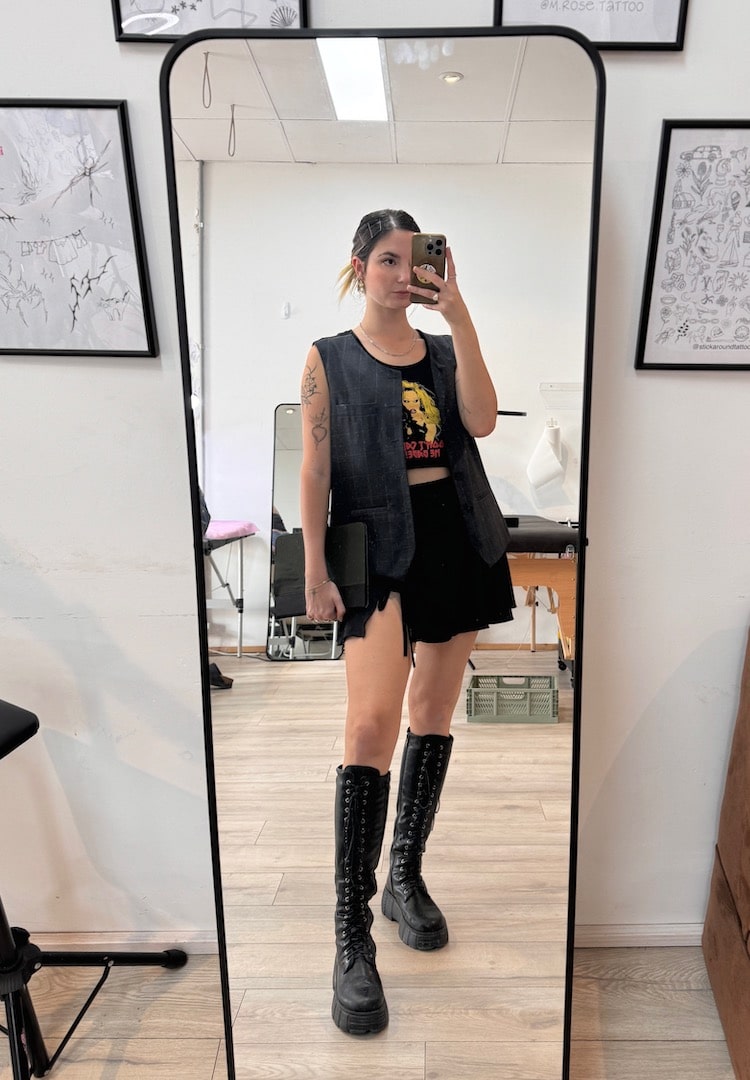Melbourne label Par Moi doesn’t play by industry rules, and for a good reason
PHOTOGRAPHER – BRITT MURPHY AND ASHIYA OMUNDSEN
MODEL – BILLIE FROM PEOPLE
WORDS – EVANGELINE POLYMENEAS
“I played by the industry rules before. I know I can fully reject all of that now.”
Melbourne designer Ashiya Omundsen is all too familiar with the pitfalls of fast fashion. After launching a full-scale label, House of Cards, at only 22-years-old, she quickly realised that she didn’t want to play by the industry’s rules. When the label ultimately failed, it solidified her dislike of strict seasonal production and making pieces to sell wholesale.
After taking some time away from the industry and a brief stint as a digital marketer, Ashiya returned to fashion in 2019, but this time on her own terms. The label that resulted, Par Moi, is a rejection of fast fashion – the name translated from French means ‘by me’, which is very fitting for a label where she calls all the shots and makes only to meet demand.
Keep up to date with ethical, Australian design over at our Fashion section.
Par Moi sits at the intersection of modernity and the 20th century. Heavily inspired by the past, the brand’s bold, structured collars and oversized shirt dresses are juxtaposed with ultra-feminine love heart prints and ruffled cuffs.
Each of the brand’s pieces is created from deadstock fabrics and doesn’t fall into traditional fashion ‘seasons’, a decision that is meant to discourage needless consumption. To keep waste to a minimum, Ashiya and her friends make every order by hand in her Melbourne home. I spoke to Ashiya about her early experiences as a fast fashion designer, Par Moi’s ethos, and why sustainability is a necessity rather than an option.
Hi Ashiya! Thanks for chatting with us. Can you tell us a bit about yourself and how you got into the industry?
I studied graphic design and photography at uni but I am self-taught when it comes to sewing. I did a mentorship program [with the Queensland University of Technology] where I had help from industry professionals while I was doing [House of Cards] and through that, I got a bit more patternmaking experience. I originally started with a different label. I started by making clothes for a store that I used to work at.
I started the full-scale brand at 22, which lasted for five years and then flopped. Then I took a bit of break before I started Par Moi… At first, I was like ‘I am not getting back into it, I am going to get a big girl job‘, which I did. And then I was like, ‘Actually I miss it’. I started making a few pieces again at the start of 2019, more for me to be able to get back into [design], and then it grew from there.
View this post on Instagram
Fashion is a notoriously crowded and fickle market, which you obviously know firsthand. So why did you start Par Moi?
It was for me, personally. I wasn’t really trying to succeed or anything. I was just trying to make things that I wanted to make.
The brand rejects fast fashion and you’ve instead developed an ethos that centres around sustainability. What does sustainability mean to you, and how does Par Moi incorporate that?
I don’t know how to answer the question, ‘What does it mean to me?’ because it’s compulsory at this point or else we’re not going to have a future for our planet. I get a bit tongue-tied when I try to explain myself. I just think it’s the right thing to do. In terms of Par Moi, everything is made from deadstock or remnant fabrics, which means that I’m not producing any demand for new materials or using resources.
Additionally, each piece is made-to-order, which means there aren’t stockpiles of stuff sitting there. It is made exactly to meet demand. Packaging is all recycled cardboard. I don’t know how I feel about those compostable bags because they put the responsibility on the receiver to be able to compost them.
Par Moi doesn’t adhere to the traditional fashion ‘seasons’. What inspired that decision?
It really goes back to doing things sustainably. With my old band, it was all about [selling via] wholesale and [producing to] seasons, but ultimately it failed. With Par Moi, I am just doing things exactly the way I want to and really, being selfish. When things are ready to be put out, then I will put them out. That means that I can also take the time.
Also, when I started Par Moi I was working full-time, so I didn’t have time to design an entire collection. I think that, as well, seasonal collections ultimately become past seasons’ collections. Whereas if you have a single piece that you put out, it’s not tied to anything so it can never become ‘last season’.
View this post on Instagram
What challenges have you faced while building Par Moi?
I think the main challenge has been growing faster than I’ve been able to manage. But it isn’t that difficult, because I can just turn things off and not accept orders when we’re at capacity. I already learnt all the hard lessons in the past.
Such as?
I’ve just done everything the opposite. No seasons. No wholesale. I make everything to order. It is all the opposite of how I’ve done it in the past. I played by the industry rules before. I know I can fully reject all of that now.
What’s your favourite piece that you’ve created?
We have a few new pieces that are about to come out that I love. But so far, probably the Torta dress. It is just so easy to wear. Pair it with a long boot or wear it on its own in summer, it is just so versatile.
How is the future looking for Par Moi?
Good, I hope. So far, I am still working out of the second bedroom in my apartment. So hopefully, moving into a second space. I currently have one friend who freelances with me occasionally. Maybe growing from that, getting more machinists to help, but that will come after we move into a second space.
You can explore Ashiya’s designs here.

